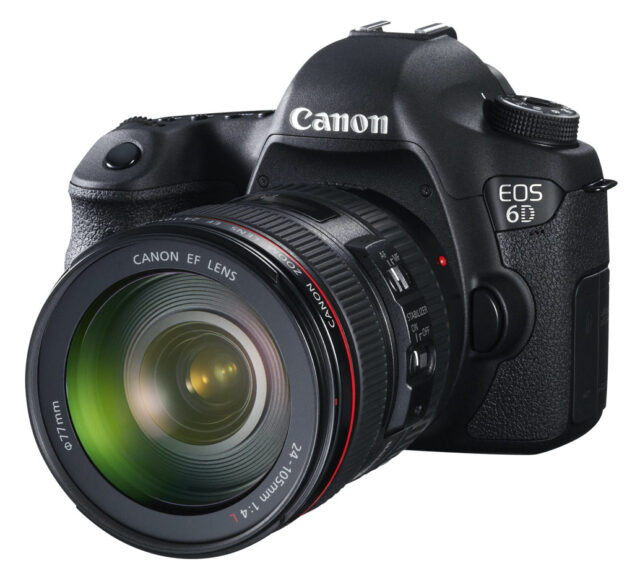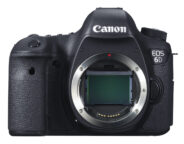Announced
System
Canon EOS system cameras
- Canon EF-M
- Canon EOS 10 S
- Canon EOS 10D
- Canon EOS 1D
- Canon EOS 1D mark II
- Canon EOS 1D mark II N
- Canon EOS 1D mark III
- Canon EOS 1D mark IV
- Canon EOS 1D X
- Canon EOS 1D X Mark II
- Canon EOS 1D X Mark III
- Canon EOS 1Ds
- Canon EOS 1Ds mark II
- Canon EOS 1Ds mark III
- Canon EOS 3
- Canon EOS 3000
- Canon EOS 5000
- Canon EOS 5D
- Canon EOS 5D mark II
- Canon EOS 5D mark III
- Canon EOS 5D mark IV
- Canon EOS 5Ds
- Canon EOS 5Ds R
- Canon EOS 620
- Canon EOS 630
- Canon EOS 650
- Canon EOS 6D
- Canon EOS 6D Mark II
- Canon EOS 700
- Canon EOS 750 QD
- Canon EOS 850
- Canon EOS A2
- Canon EOS D30
- Canon EOS D60
- Canon EOS ELAN
- Canon EOS ELAN 7E
- Canon EOS ELAN 7NE
- Canon EOS ELAN II
- Canon EOS IX
- Canon EOS IX Lite
- Canon EOS Rebel 2000
- Canon EOS Rebel G
- Canon EOS Rebel K2
- Canon EOS Rebel S II QD
- Canon EOS Rebel T2
- Canon EOS Rebel Ti
- Canon EOS Rebel X
- Canon EOS Rebel XS
- Canon EOS Rebel XS N DATE
- Canon EOS RT
- Canon EOS-1
- Canon EOS-1N
- Canon EOS-1N RS
- Canon EOS-1V
Canon EOS 6D
35mm AF digital SLR camera
Specification
| Format: | |
| 35mm full frame | |
Imaging sensor: | 35.8 × 23.9mm CMOS sensor |
Resolution: | 5472 × 3648 - 20 MP |
Sensor-shift image stabilization: | - |
| Canon EF [44mm] | |
| Shutter: | |
Type: | Focal-plane |
Model: | Electronically controlled |
Speeds: | 30 - 1/4000 + B |
| Exposure: | |
Exposure metering: | Through-the-lens (TTL), open-aperture |
Exposure modes: | Programmed Auto |
| Aperture-priority Auto | |
| Shutter-priority Auto | |
| Manual | |
| Physical characteristics: | |
Weight: | 750g |
Dimensions: | 144.5x110.5x71.2mm |
Manufacturer description #1
Developed for users wishing to effortlessly enjoy the high image quality afforded by a 35 mm full-frame camera, the Canon EOS 6D features a lightweight, compact body design, making it ideally suited as the next-step model for entry-level SLR camera users or as a secondary camera for advanced-amateur enthusiasts.
Incorporating a newly developed approximately 20.2-megapixel 35 mm full-frame CMOS sensor, the Canon EOS 6D delivers the impressive background image blur unique to full-frame cameras while also realizing a maximum continuous shooting speed of approximately 4.5 images per second. By combining the newly developed CMOS image sensor with the high-performance DIGIC 5+ image processor, the camera realizes a wide dynamic range with exceptional color reproduction and rich gradation. Furthermore, the 6D offers a maximum ISO setting that has been expanded to 25600,*1 which can be extended to 102400, making possible high-quality image results with reduced noise even in low-light environments.
Featuring a body that weighs approximately 680 g, making it the world’s lightest*2 35 mm full-frame digital SLR camera, the EOS 6D enables effortless handheld shooting and contributes to the expansion of imaging possibilities. By reducing the size of the shutter unit, mirror motor drive and CMOS sensor package, the model is the same approximate size and weight as the EOS 60D (released in September 2010), which employs an APS-C sensor.
The Canon EOS 6D’s built-in wireless LAN function*3 allows the capture, playback and sharing of still images and video to be performed wirelessly. Still image and video data can be sent to devices that support a Wi-Fi connection, such as smartphones, PCs and Canon-brand cameras*4 and printers,*5 as well as DLNA-compatible televisions*6 and the online photo service Canon iMAGE GATEWAY*7. The EOS Remote*8 application for smartphones supporting Wi-Fi enables the 6D to be operated remotely, allowing users to confirm the camera’s Live View display and capture still images from a smartphone. Furthermore, still images (JPEG) saved in the camera’s memory card can be transferred to a smartphone.
Manufacturer description #2
London, UK, 17 September 2012 – Canon today unveils its latest EOS DSLR for serious photography enthusiasts – the EOS 6D. A similar size and weight to the EOS 60D, the EOS 6D is the world's lightest1 DSLR to feature a full-frame CMOS sensor, making it ideal for travel, portrait and landscape photographers. The model creates a new entry point into Canon's full-frame line-up, and is perfect for those who want greater control over depth of field, or to maximise the impact of shooting with the EOS system's extensive range of wide-angle EF lenses.
The EOS 6D combines a powerful, full-frame imaging system and superior low-light performance with a compact, robust and lightweight design. For the first time in any EOS model, Wi-Fi2 and GPS3 connectivity are included, empowering photographers to capture stunning images on the move, tag them with location information and wirelessly transfer them to a computer, the cloud, or smartphones.
Incredible images in all conditions
Benefiting from 25 years of EOS innovation, the EOS 6D features a newly-designed 20.2 Megapixel full-frame CMOS sensor that allows photographers to produce poster-sized prints, or to crop into their shots with no compromise in quality. A native ISO range of ISO 100-25,600 (extendable to 50-102,400) also makes capturing crisp, natural shots in near darkness easier than ever before.
A new 11-point AF system also offers the strongest low light performance of any Canon AF system to date. With focusing down to EV-3, the equivalent of moonlight, subjects remain in-focus in even the most challenging lighting conditions – offering the freedom to shoot landscapes or portraits at night and capture the true atmosphere of the scene with minimal noise.
Explore your creativity to the full
The inclusion of a full-frame sensor offers greater control over depth of field in portraits, allowing photographers to easily isolate their subjects with attractive background blur. With the EOS 6D, photographers can now also explore the full potential of their wideangle EF lenses to capture every detail of a sweeping landscape, with models ranging from 8mm to 800mm. Additionally powerful DIGIC 5+ image processing offers a host of automatic modes and creative shooting features, complementing full manual controls to offer total flexibility to a wide range of users.
The EOS 6D is full of advanced features to assist photographers in capturing outstanding quality landscapes and portraits. HDR mode enables the capture of both highlights and low lights in tricky lighting conditions, while Multiple Exposures allows photographers to combine up to nine separate exposures into a single image incamera, creating a dramatic effect in the final picture. A silent drive mode offers a more subtle option for shooting candid portraits or weddings, and a single axis electronic level accessed through the viewfinder or via the LCD screen, ensures that horizons are level during image composition.
Built for sharing
The first ever EOS to feature integrated Wi-Fi connectivity, the EOS 6D enables photographers to share their work immediately after shooting. Images can be wirelessly transferred to external storage devices, uploaded to Facebook and YouTube, or printed wirelessly using a Canon Wi-Fi enabled printer. Alternatively, movies and images can be viewed on DLNA-enabled HDTVs – enabling high-quality, big-screen viewing. By wirelessly connecting to a smartphone, photographers can also remotely control the camera, adjusting shooting settings and focus before remotely triggering the shutter and viewing the captured image.
Using the EOS 6D's integrated GPS, images can be tagged with location data as they are shot. Travellers can also build a more complete record of their trip by using the GPS logger function to track their route, which can be displayed using the supplied Map Utility software
Robust, intuitive design
Measuring just 144.5 x 110.5 x 71.2mm and weighing 770g4, the EOS 6D is the most compact full-frame EOS DSLR ever manufactured. Its dust and drip-proof, part magnesium body offers robust protection and an intuitive button layout for easy control. Photographers can also view their shots in stunning detail and with natural colours on the large, high-resolution 7.7cm (3.0") Clear View LCD screen, which features an enhanced anti-glare design to permit viewing in bright sunlight and at extreme angles.
A new Battery Grip BG-E13 provides additional power for extended shooting, while also making it easy to shoot both vertically and horizontally. When used with two LP-E6 batteries, the battery grip offers double the number of shots, and it can also be used with AA batteries for added convenience and flexibility.
EOS 6D - key features
- Full-frame 20.2 Megapixel sensor
- Tough, lightweight construction
- Max ISO 25,600 (expandable to ISO 102,400)
- 11-point AF sensitive down to -3EV
- GPS3 records your location
- Wi-Fi2 file transfer and remote control
- Full-HD video
Similar cameras (1)
35mm full frame • Auto focus • Digital • Singe-lens reflex • Canon EF mount
| Model | Shutter | Metering | Modes | Year |
|---|---|---|---|---|
| Kodak DCS Pro SLR/c | E, 1/6000 | TTL • OA | PASM | 2004 |

